DRM 显示框架
Rockchip_Developer_Guide_DRM_Display_Driver_CN.pdf
vop 2.0 显示子系统架构
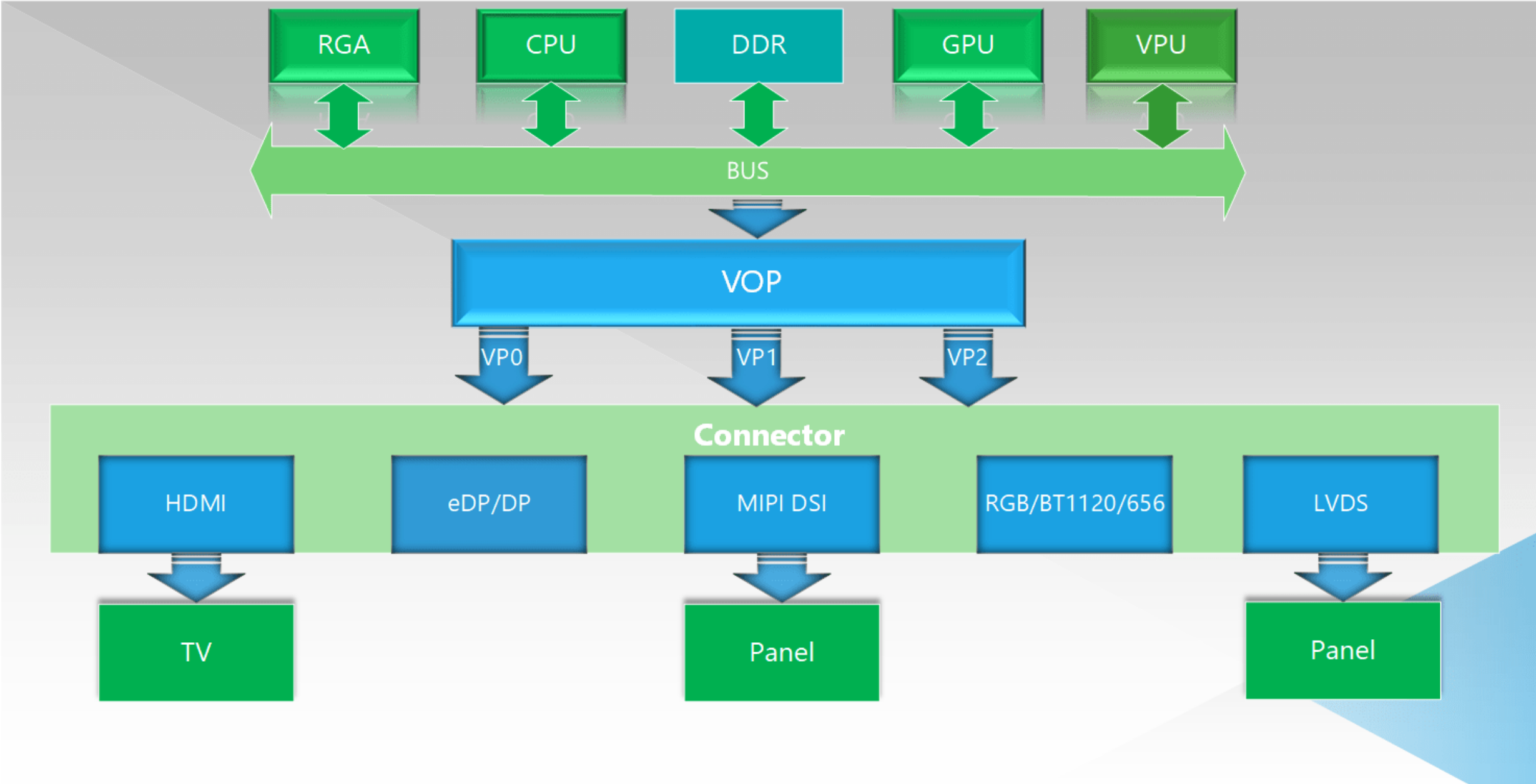
VOP 2.0 采用了统一显示架构,即整个 SOC 上只存在一个 VOP,但是在 VOP 的后端设计了多路独立的 Video Port(简称 VP) 输出接口, 这些 VP 能够同时独立工作,并且输出相互独立的显示时序。比如在上面的 VOP 2.0 框图中,有三个 VP,就能同时实现三屏异显。
RK3568 VP 和各显示接口的连接关系
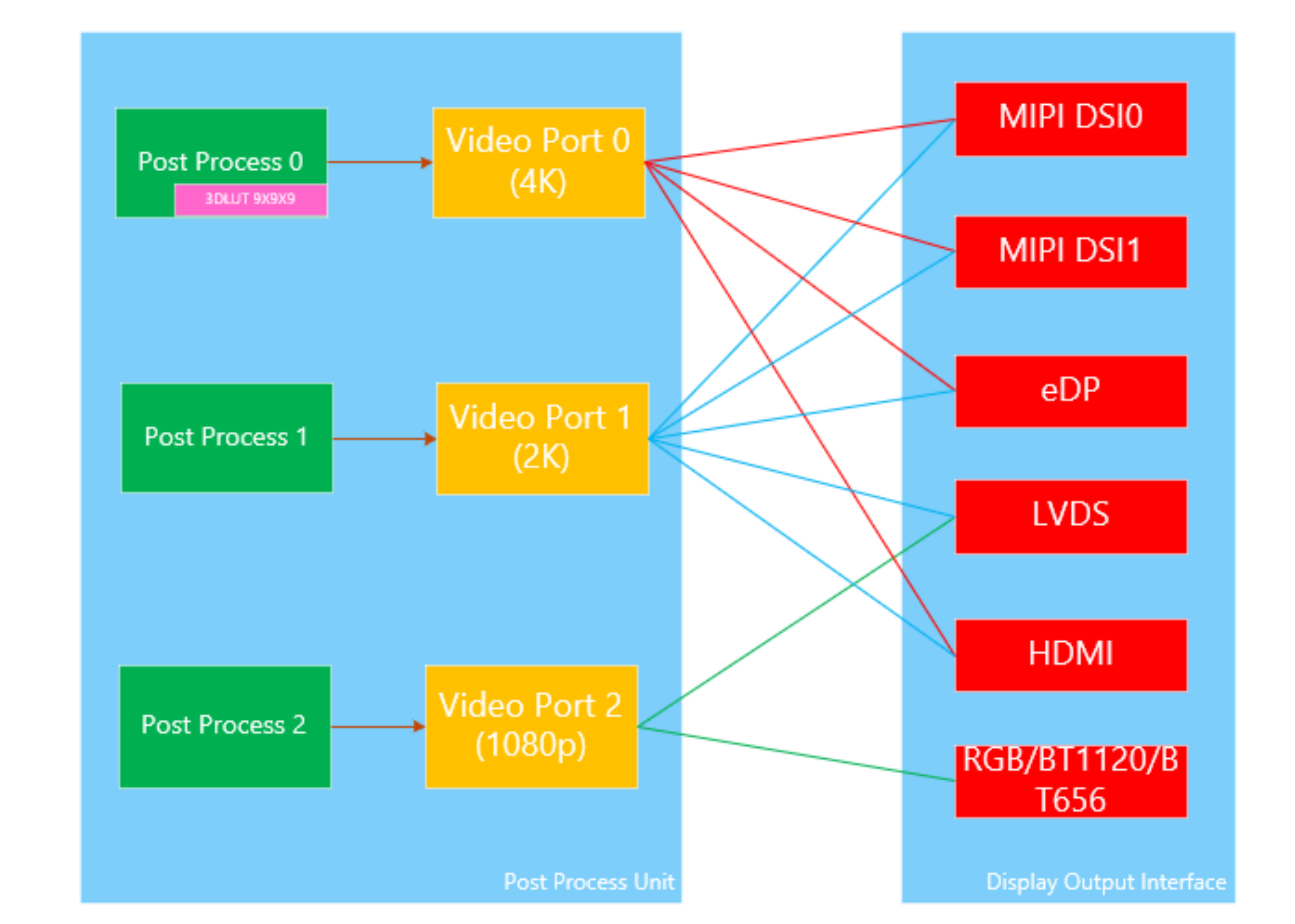
DTS
kernel/arch/arm64/boot/dts/rockchip/rk3568.dtsi
vop: vop@fe040000 {
compatible = "rockchip,rk3568-vop";
reg = <0x0 0xfe040000 0x0 0x3000>, <0x0 0xfe044000 0x0 0x1000>;
reg-names = "regs", "gamma_lut";
rockchip,grf = <&grf>;
interrupts = <GIC_SPI 148 IRQ_TYPE_LEVEL_HIGH>;
clocks = <&cru ACLK_VOP>, <&cru HCLK_VOP>, <&cru DCLK_VOP0>, <&cru DCLK_VOP1>, <&cru DCLK_VOP2>;
clock-names = "aclk_vop", "hclk_vop", "dclk_vp0", "dclk_vp1", "dclk_vp2";
iommus = <&vop_mmu>;
power-domains = <&power RK3568_PD_VO>;
status = "disabled";
vop_out: ports {
#address-cells = <1>;
#size-cells = <0>;
vp0: port@0 {
#address-cells = <1>;
#size-cells = <0>;
reg = <0>;
vp0_out_dsi0: endpoint@0 {
reg = <0>;
remote-endpoint = <&dsi0_in_vp0>;
};
vp0_out_dsi1: endpoint@1 {
reg = <1>;
remote-endpoint = <&dsi1_in_vp0>;
};
vp0_out_edp: endpoint@2 {
reg = <2>;
remote-endpoint = <&edp_in_vp0>;
};
vp0_out_hdmi: endpoint@3 {
reg = <3>;
remote-endpoint = <&hdmi_in_vp0>;
};
};
vp1: port@1 {
#address-cells = <1>;
#size-cells = <0>;
reg = <1>;
vp1_out_dsi0: endpoint@0 {
reg = <0>;
remote-endpoint = <&dsi0_in_vp1>;
};
vp1_out_dsi1: endpoint@1 {
reg = <1>;
remote-endpoint = <&dsi1_in_vp1>;
};
vp1_out_edp: endpoint@2 {
reg = <2>;
remote-endpoint = <&edp_in_vp1>;
};
vp1_out_hdmi: endpoint@3 {
reg = <3>;
remote-endpoint = <&hdmi_in_vp1>;
};
vp1_out_lvds: endpoint@4 {
reg = <4>;
remote-endpoint = <&lvds_in_vp1>;
};
vp1_out_lvds1: endpoint@5 {
reg = <5>;
remote-endpoint = <&lvds1_in_vp1>;
};
};
vp2: port@2 {
#address-cells = <1>;
#size-cells = <0>;
reg = <2>;
vp2_out_lvds: endpoint@0 {
reg = <0>;
remote-endpoint = <&lvds_in_vp2>;
};
vp2_out_rgb: endpoint@1 {
reg = <1>;
remote-endpoint = <&rgb_in_vp2>;
};
vp2_out_lvds1: endpoint@2 {
reg = <2>;
remote-endpoint = <&lvds1_in_vp2>;
};
};
};
};
DRM
全称是 Direct Rendering Manager,进行显示输出管理、buffer 分配、帧缓冲。对应的 userspace 库为 libdrm,libdrm 库提供了一系列友好的控制封装,使用户可以方便的进行显示的控制和 buffer 申请。 DRM 的设备节点为 “/dev/dri/cardX”, X 为 0-15 的数值,默认使用的是 /dev/dri/card0
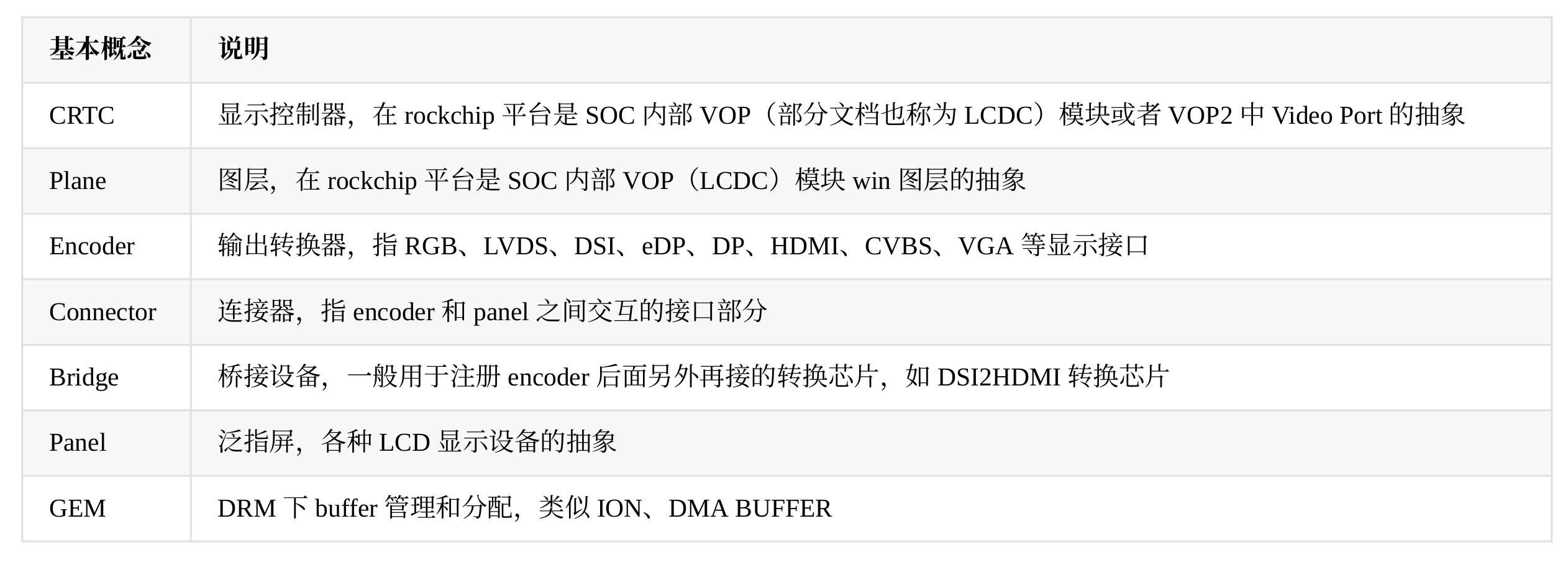
显示通路
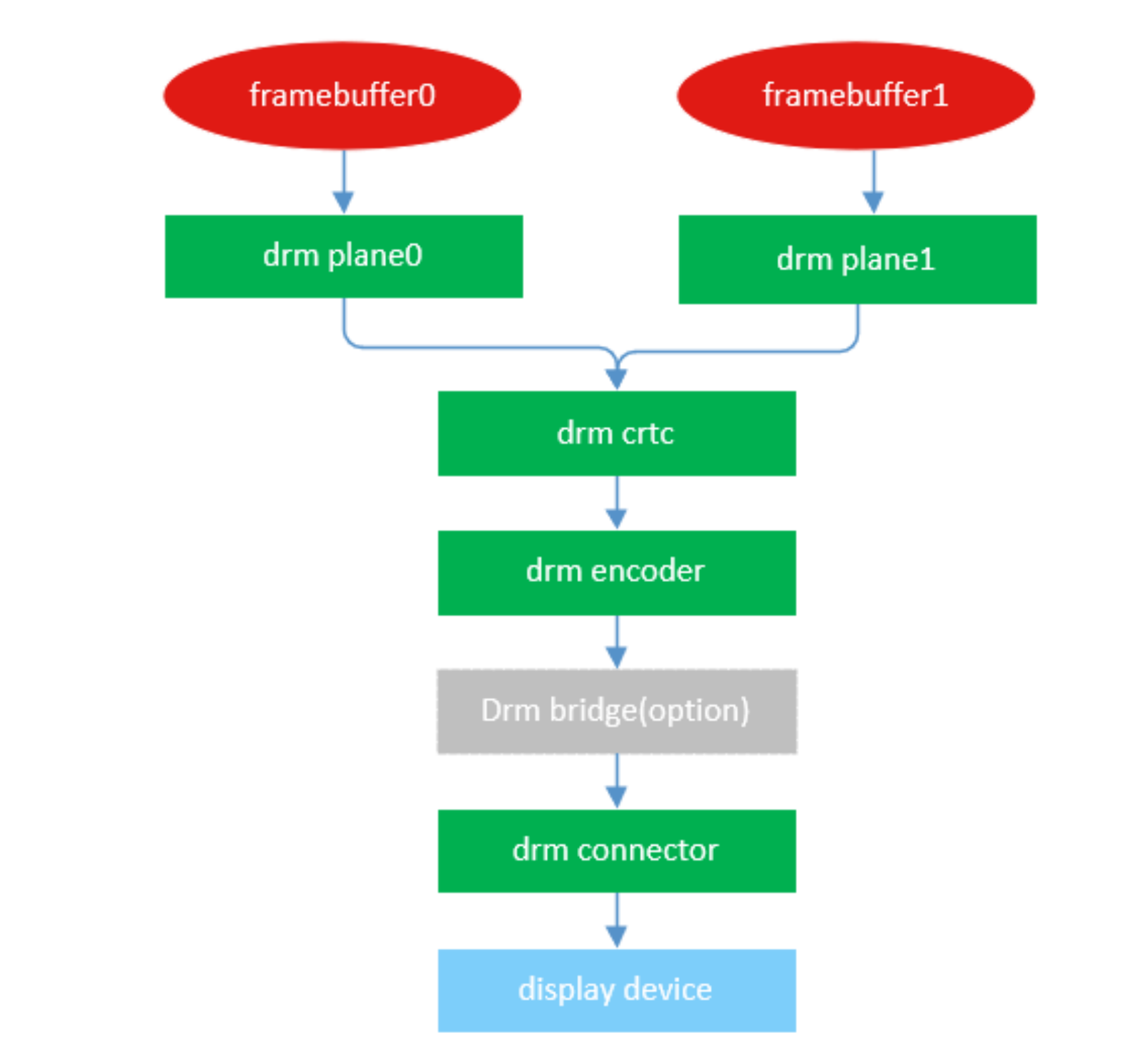
DRM 驱动 和 libdrm 的交互过程
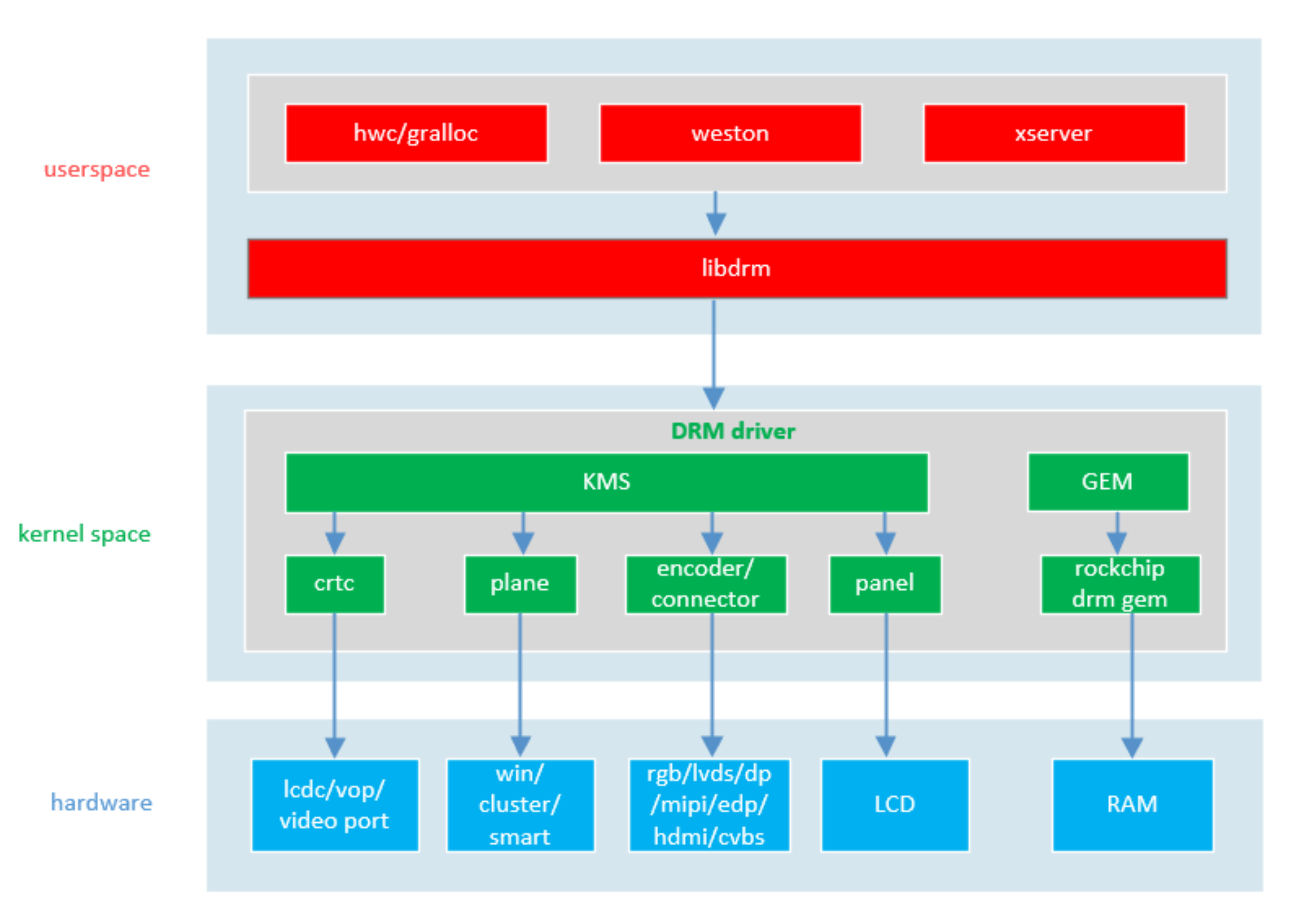
扫描时序
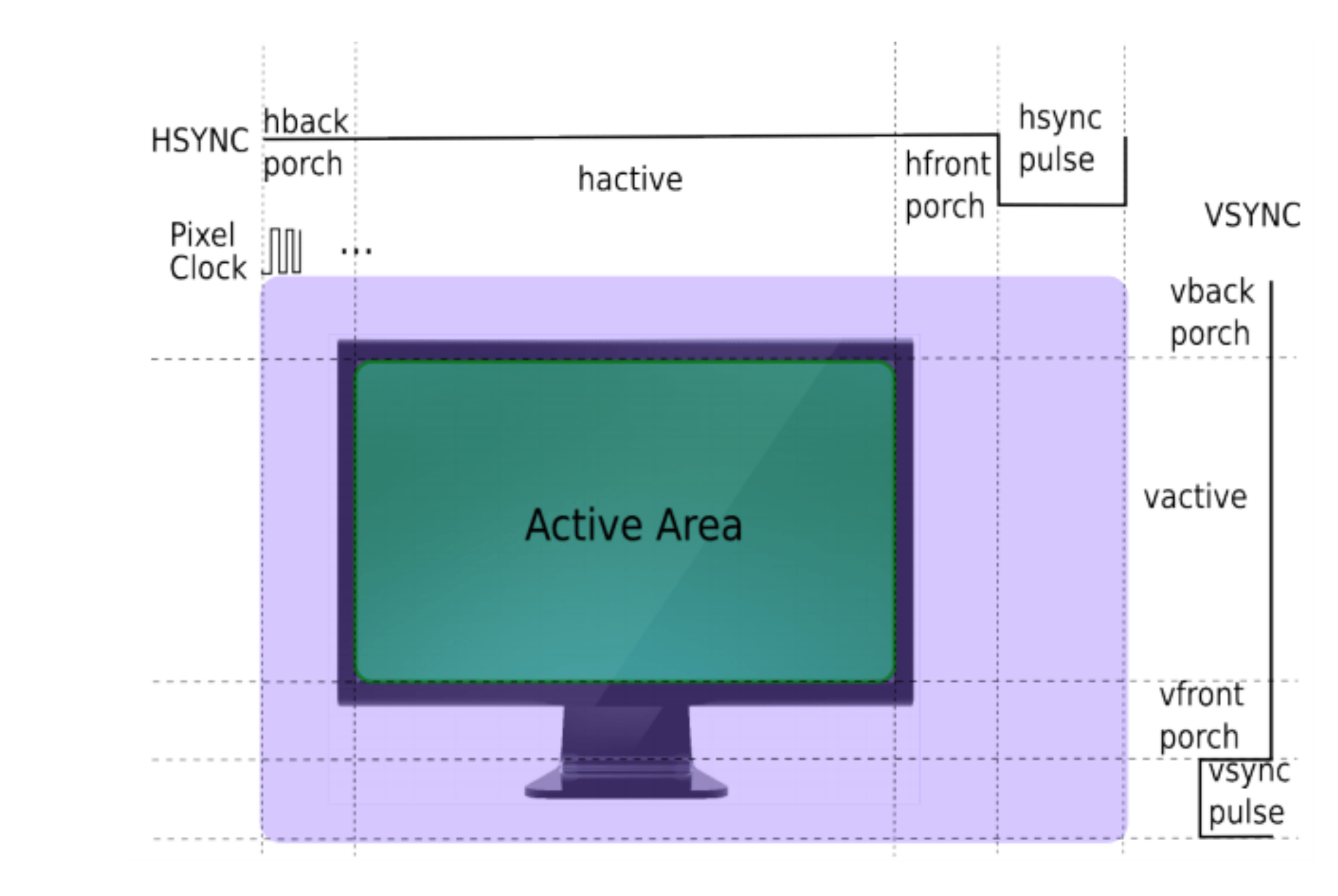
dsi0_timing0: timing0 {
clock-frequency = <68000000>;
hactive = <800>;
vactive = <1280>;
hback-porch = <18>;
hfront-porch = <18>;
vback-porch = <8>;
vfront-porch = <24>;
hsync-len = <18>;
vsync-len = <4>;
hsync-active = <0>;
vsync-active = <0>;
de-active = <0>;
pixelclk-active = <0>;
};
MIPI 驱动适配
原理图

DTS
dsi1: dsi@fe070000 {
compatible = "rockchip,rk3568-mipi-dsi";
reg = <0x0 0xfe070000 0x0 0x10000>;
interrupts = <GIC_SPI 69 IRQ_TYPE_LEVEL_HIGH>;
clocks = <&cru PCLK_DSITX_1>, <&cru HCLK_VO>;
clock-names = "pclk", "hclk";
resets = <&cru SRST_P_DSITX_1>;
reset-names = "apb";
phys = <&video_phy1>;
phy-names = "dphy";
power-domains = <&power RK3568_PD_VO>;
rockchip,grf = <&grf>;
#address-cells = <1>;
#size-cells = <0>;
status = "okay"; // okay
ports {
#address-cells = <1>;
#size-cells = <0>;
dsi1_in: port@0 {
reg = <0>;
#address-cells = <1>;
#size-cells = <0>;
dsi1_in_vp0: endpoint@0 {
reg = <0>;
remote-endpoint = <&vp0_out_dsi1>;
status = "disabled";
};
dsi1_in_vp1: endpoint@1 {
reg = <1>;
remote-endpoint = <&vp1_out_dsi1>;
status = "disabled";
};
};
};
};
Xrandr
xrandr(X Resize and Rotate)是 Linux 下用于 管理显示屏(屏幕)配置 的命令行工具。它适用于 Xorg(X11)系统,可以用于调整 分辨率、刷新率、旋转方向、多屏显示 以及 启用/禁用显示输出 等操作。
root@ubuntu2004:~# xrandr
Screen 0: minimum 320 x 200, current 1824 x 1280, maximum 16384 x 16384
HDMI-1 connected 1024x768+0+0 (normal left inverted right x axis y axis) 0mm x 0mm
1024x768 60.00*+
1280x720 60.00 60.00 59.94
800x600 60.32 56.25
720x576 50.00
720x480 60.00 60.00 59.94 59.94 59.94
640x480 60.00 59.94 59.94
DSI-1 connected primary 800x1280+1024+0 (normal left inverted right x axis y axis) 0mm x 0mm
800x1280 50.01*+